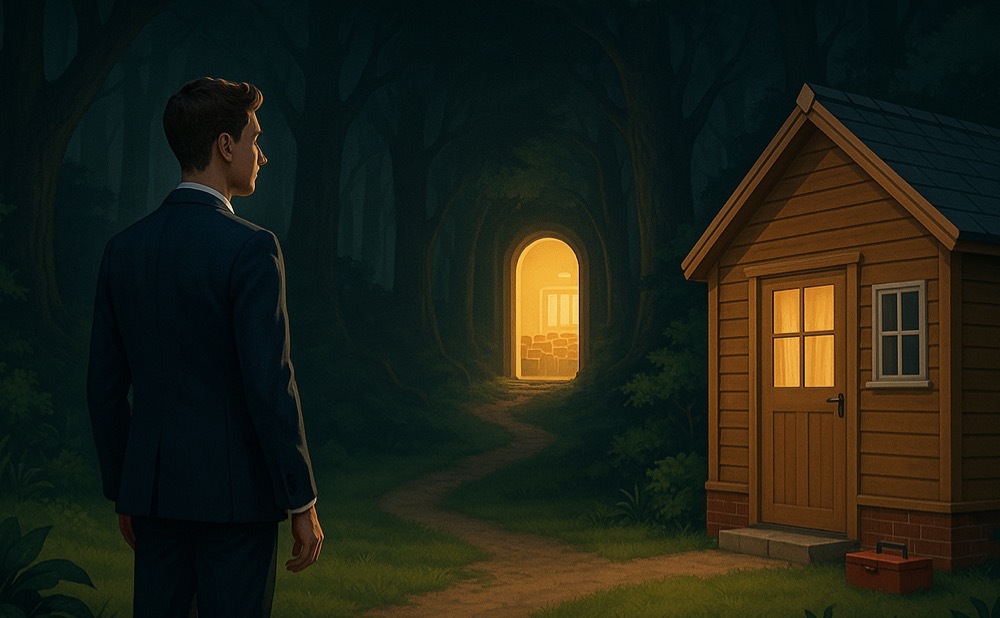Throughout this series we’ve explored a wide range of entrepreneurial skills: pitching, sales, stakeholder management, and team building.
But as a solo founder, I want to highlight another critical capability: resilience.
Embracing uncertainty and overcoming personal barriers is a defining trait of successful founders.
In this article, I share how I manage high-uncertainty situations and reframe them into opportunities.
Reducing Risk During Uncertain Times
Every innovative idea is wrapped in uncertainty. If it weren’t, it wouldn’t be “new” enough to count as a breakthrough. That’s why innovation can be so daunting.
It’s natural to fear ambiguity.
Why step into an unexplored forest, where danger might lurk, when your safe, familiar berry bush is right beside you?
And yet, humanity has always pushed forward; discovering fire, flying in fragile machines, and launching into space. Uncertainty, while uncomfortable, is also where the greatest potential to generate value is located.
But here’s the challenge: uncertainty makes us feel like we’ve lost control, and this tends to trigger anxiety.
It can seem as though only a rare few are born to be entrepreneurial. The truth, however, is that you’ve been embracing uncertainty since your first day at school.
The Classroom Analogy
Think of uncertainty as a black box. Your current state goes into the box, and a new, altered state come out.
Hopefully, your state in the game has increased in value.
Now imagine stepping into a university lecture theatre. You walk in “not knowing” and expect to leave with added knowledge. You don’t know exactly what or how you’ll learn, but you trust the process. The classroom is, in this sense, a black box, filled with uncertainty.
Why, then, is embracing uncertainty in business so much harder than stepping into a lecture theatre?
The difference lies in the conditions.
People willingly take risk when:
- The potential upside is clear, and
- Failure is either trivial, or easily remedied.
Classrooms create these conditions. Learning has obvious value, and failure is temporary: one missed lesson doesn’t erase prior knowledge, and practice brings eventual mastery.
The key lesson for founders: when business ambiguity rises, try to recreate “classroom conditions”. This helps preserve clarity and protect mental health.
Reframing Challenges to Satisfy Classroom Conditions
In March, our new wood workshop arrived: an 18-by-10 foot shed delivered in over two tonnes worth of disassembled wood panels. It was a major milestone for the project, but when it landed, I was terrified.
The delivery wouldn’t even fit through the service door to the garden. We had to unpack every panel one-by-one and carry them into the garden by hand. Overwhelmed, I had a panic attack. The uncertainty felt crushing.
What if we couldn’t build it?
Would the whole project stall?
I sought perspective from the top floor of the hall, overlooking the garden from nine stories above.
From there, I reframed the challenge:
- Even without the shed, we could still build the twelve new raised garden beds.
- If necessary, a contractor could always be hired to assemble it later.
Seen this way, the task fit within the “classroom conditions”. The fear disolved, and the challenge became manageable.
Patience, Confidence, and Support = Resilience
With renewed confidence, I tackled the challenge of building the shed head-on.
Over one weekend, with my best friend beside me, we leveled the base, screwed wall panels, braced the structure, built doors, and installed the roof.
Whenever we encountered obstacles, I remember what one of our volunteers had once advised: “Step-by-step, at your own pace – the only deadline you have is yourself”.
With a combination of patience, support, and self-belief, we eventually finished the shed.
The Prideful Aftermath of a Breakthrough
Today, the shed stands firmly on solid foundations, stocked with power tools, safety gear, and every hand tool a gardener could dream of.
But its true value lies beyond its functional utility. The shed is a symbol that offers perspective. Our vision is real and achievable. Personally, it gave me lasting confidence: nothing we plan feels as difficult as that shed once did.
Now, whenever doubts creep in, I look at its painted walls, openable windows, and water collection gutters, and all doubts disappear.
Key Takeaways
Recogise that uncertainty is a routine process. You undertake it on a daily basis. Acknowledging this is the first step to becoming comfortable with trying new things and venturing into the unknown.
Reframe challenges into classroom conditions. Ensure the upside is clear, and the downside is manageable.
Lean on patience, the support of those closest to you, and conviction in your ability to persevere. These are the ingredients that resilience and breakthroughs are made of.
Uncertainty will always feel uncomfortable. But by shifting perspective, you can learn to embrace it, and maybe even learn to love the process.
Emilio Garcia Padron is an MSc Applied Mathematics student at Imperial College London, specializing in Computational Dynamical Systems. He is a full-stack software developer and founder of NEA Studios. He is also a founder of RE:GEN @ Imperial, a project aiming to protect and expand Green Spaces on Imperial grounds that raised over £39,000 in funding.
Image: DALL-E
🔴 Found these ideas useful?
Sharpen your edge
